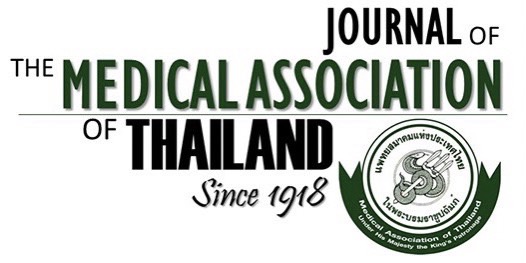Preoperative Axillary Ultrasound to Detect Lymph Node Metastasis in Early Breast Cancer: A Prospective Trial
Siriporn Bureewong¹, Suthinee Posri²
Affiliation : ¹ Department of Surgery, Chao Phraya Abhaibheubejhr Hospital, Prachinburi, Thailand; ² Department of Radiology, Chao Phraya Abhaibheubejhr Hospital, Prachinburi, Thailand
Background: De-escalation of axillary surgery has become an important focus in early-stage breast cancer management. While sentinel lymph node biopsy (SLNB) remains the standard for clinically node-negative patients, it provides no therapeutic benefit and carries potential complications. Axillary ultrasound has emerged as a less invasive modality for nodal assessment, although criteria for defining suspicious lymph nodes vary across studies.
Objective: To evaluate the value of preoperative axillary ultrasound for detecting lymph node metastasis in early breast cancer.
Materials and Methods: The present study was a prospective study enrolled 81 women with early-stage breast cancer and clinically negative axilla at Chao Phraya Abhaibhubej Hospital, Thailand between March 2022 and April 2024. Preoperative axillary ultrasound was performed one day prior to surgery, with cortical thickness greater than 3 mm or absence of fatty hilum defined as suspicious. All patients underwent breast surgery with SLNB, followed by frozen section and completion axillary lymph node dissection (ALND) if positive. Clinical, pathological, and imaging data were analyzed.
Results: The mean age was 55.7 years, and the mean tumor size was 2.5 cm. Preoperative ultrasound identified suspicious nodes in 36 patients (44.4%). Pathology confirmed sentinel lymph node metastasis in 30 patients (37.0%). Axillary ultrasound demonstrated a sensitivity of 93.3% (95% CI 85.9 to 100.0), specificity of 84.3% (95% CI 74.6 to 94.0), positive predictive value (PPV) of 77.8%, and negative predictive value (NPV) of 95.6%. Subgroup analysis revealed that cortical thickening and loss of fatty hilum were significant predictors of nodal metastasis.
Conclusion: Preoperative axillary ultrasound, when applying cortical thickness and fatty hilum criteria, achieved high sensitivity and NPV in detecting nodal metastasis in early breast cancer. These findings support its role as a practical and minimally invasive tool to guide surgical decision-making and potentially reduce the need for axillary surgery, particularly in resource-limited settings.
Received 17 April 2025 | Revised 6 October 2025 | Accepted 22 October 2025
DOI: 10.35755/jmedassocthai.2025.11.906-911-03028
Keywords : Breast cancer; Axillary ultrasound; Lymph node metastasis
All Articles
Download



